Jazy v Norpoth v Schul v Dellinger5,000 1964 OLYMPIC GAMES, TOKYOGreat Races #16 Several runners lined up with realistic hopes of gold. Frenchman Michel Jazy, moving up from 1,500, hoped to improve on his silver medal in Rome. He clearly had the finish to win a slow race, but he had not proven himself in a fast race over this distance, his best being 13:50. Though not as fast a finisher, Ron Clarke of Australia was looking to make up for the disappointment over 10,000 four days earlier. With a three-mile time equivalent to about 13:39, he had to be considered a gold prospect.
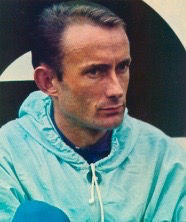
Jean Wadoux emerged in the 1960s as one of the world’s finest middle-distance runners. He was a worthy successor to Michel Jazy, in whose shadow his early career developed. His greatest achievement was a European 1,500 record of 3:34.0 in 1970. At that time it was the second-fastest 1,500 ever recorded. Wadoux also ran the 5,000 in 13:28.0. His competitive record was excellent, although critics have noted his poor record in major competitions. This is unfair. A closer look at his two Olympics and three Europeans shows that he performed well in two of these meets and was handicapped by altitude (Mexico) and by an injury in two others. Only in the 1966 Europeans did he disappoint. Wadoux won many races for his country in international matches and was French national 1,500 champion for seven consecutive years. When he moved up to the 5,000 later in his career, he posted impressive wins over Keino and Clarke and won a European silver medal in his last year of competition.
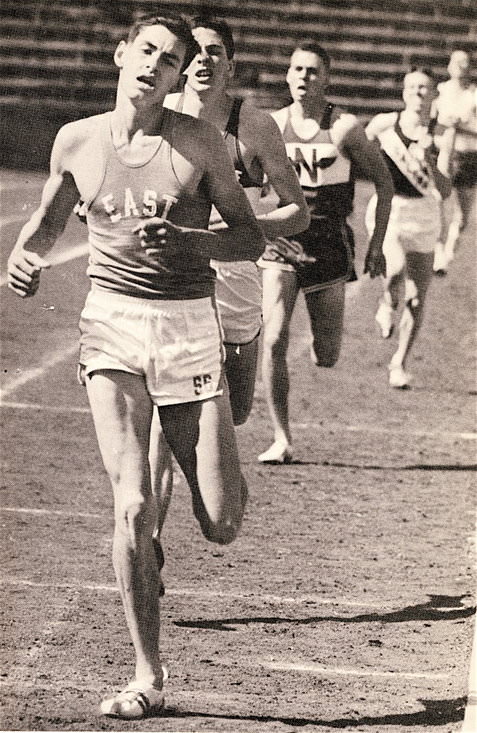
PROFILE: JIM RYUNb. 1947 Once every generation or so, a prodigy appears on the running scene with a talent far above his contemporaries. American Jim Ryun was one such prodigy. At 17 he broke the 4-min barrier and represented the USA in the 1964 Olympics. At 18 he ran 3:55.3, breaking the American Mile record. Today, almost 50 years later, he still holds five of the six fastest mile times in U.S. high school history. In his five years at the top, he consistently performed at the highest level, breaking four world records. Only in the Olympics did he fall short of his expectations. In his three Olympics his best was a silver medal.
John Whetton Profile b. 1941 Few world-class runners have been able to exploit their physical potential to the extent that John Whetton did in the 1960s. Not as physically gifted as some of his rivals, this British runner nevertheless managed to achieve a competitive record that few have equaled. His achievements on the track were the result of careful planning, dedicated training and intelligent race strategies. Ian Stewart called him “the bloody cleverest” 1,500 runner in Europe. Whetton’s greatest victory was in the 1969 European 1,500. He also ran a fine fifth in the 1968 Mexico City Olympic 1,500. But perhaps his competitive ability came through most clearly indoors. He was unbeaten indoors in the UK and Europe throughout his career and won the European 1,500 three times in a row (1966-1968). Such was his indoor reputation that he was known as the King of the Boards.
Keino v Ryun v Tummler v Norpoth v Whetton 1,500 Olympic FinalOctober 20, 1968, Mexico CityGreat Races # 21 Pre-Race This Olympic final saw a confrontation between the two fastest milers ever. And both had question marks against their current form. WR-holder Jim Ryun of the USA had recently battled with two injuries and mono. He had returned to form in the nick of time, qualifying comfortably with a 1,500 time of 3:49.0 (1:50.8 last 800). Kenyan Kip Keino had been suffering from stomach pains (later diagnosed as gall-bladder inflammation) while racing in Europe. And in the 10,000 final that preceded this race he had collapsed from the pain. Still, he was on the start line—against his doctor’s orders. Another question mark against Keino was that he had already run two finals (5,000 and 10,000) as well as three prelims. This race would be a hard test of his ability to recover.
Kemper v Boulter v Tümmler v Carter v Matuschewski Great Races #25 European 800 September 4, 1966 Budapest In the mid-1960s, the retirement of Peter Snell left a void in the 800. He had dominated the event for four years--from his Olympic win in 1960 to a repeat win in 1964. However that void was soon filled. In 1965 there were only five runners under 1:47; in 1966 there were eighteen. One race that exemplified this change was the Euro 800 in 1966, where the sixth runner ran 1:47.0. The 1966 European final for the 800 was loaded with talent. Foremost was West German Franz-Josef Kemper (20), who had just broken the European record with 1:44.9, only 0.6 off Peter Snell’s WR. Many considered him the odds-on favorite—the fastest man and the man in form. His team-mate Bodo Tummler (23), though not so fast over 800, could not be discounted after his impressive win in the Euro 1,500 a few days before. In this 1,500 race Tummler had soundly defeated the great Michel Jazy with an impressive 52.7 for the last 400—almost the exact speed of Kemper’s 1:45.9 European 800 record. Additionally Tummler had already show great tactical ability.
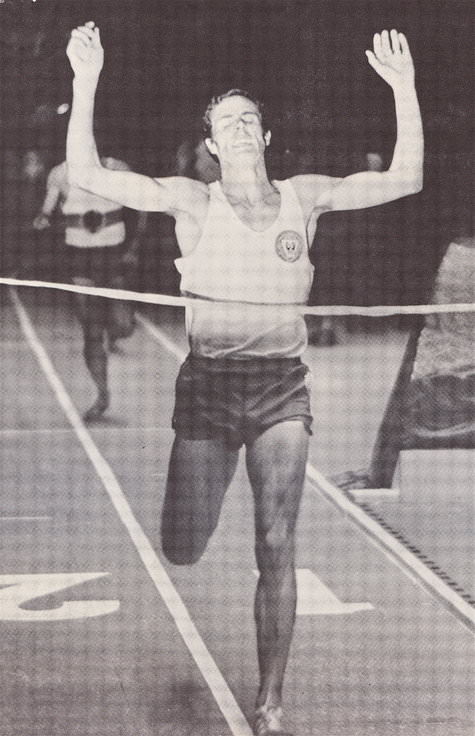
Kerry O’Brien Profileb. 17 April 1946 1.80 68kg “Slow down! Slow down!” This can often be good advice—but surely not when you’re a champion runner like Kerry O’Brien. Yet the South Australian world-record-holder has continually been told to slow down for most of his life. It’s nothing to do with his running; it’s his personality. “I’m an A-type triple plus,” he admits. “My life’s a constant go.” Of course, an A-type personality is a double edged sword. It can lead to overwork, stress and even breakdown. But with intelligence and self-discipline it can enable great achievements. Kerry O’Brien made good use of his A-type personality to break world records for the 3,000 Steeplechase and the Indoor Two Miles, win nine Australian titles, earn a Commonwealth silver medal, and place fourth in the 1968 Olympic Steeplechase final.
Profile: Kipchoge Keinob. 1940 Kipchoge Keino was not the first Kenyan to win a medal in an Empire Games nor the first to win an Olympic medal, but he was the first Kenyan to have a major impact on the international running scene and the first Kenyan to break world records. For eight years, from 1965 to 1972, he was one of the best if not the best middle-distance runner in the world. He won two Olympic gold medals and two silver, as well as three Commonwealth gold medals and one bronze. And though more a competitor than a record breaker, he set WRs for 3,000 and 5,000. Kip Keino always raced with panache and courage; whenever he was in a race, the interest rose. And of course he was the precursor of the flood of Kenyan runners that is still a dominant force in distance running today.
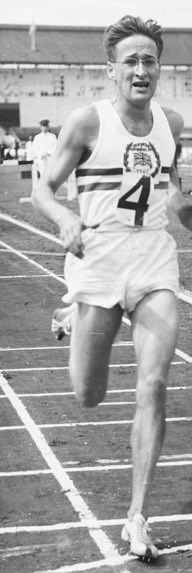
“I’m driven, analytical, and a keen observer.” English distance runner Martin Hyman lacked basic speed. He couldn’t beat 2:00 for 800; his best 400 was a pedestrian 57.5. Yet he was able to place 4th in three major track championships, and from 1958 to 1964 he recorded times that even today would put him in the top six of the British rankings for 10,000. On the road he was considered by some as unbeatable. He had notable wins in Spain and Brazil and set many course records. Even in cross-country, which he considered his weakest event, he ran 3rd in the 1961 international championships.
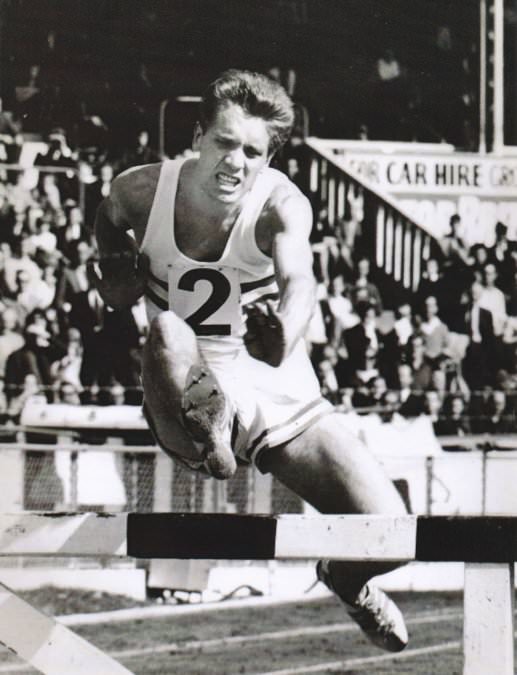
Maurice Herriott Profile b. 1939 While many of his international rivals were being financially supported by their countries, 1964 Olympic Steeplechase silver-medalist Maurice Herriott had to work a 45-hour week on a factory production line. Nevertheless, he managed to train three times a day and perform at international level for eleven years from 1958 to 1968. During these years Herriott was British Steeplechase champion eight times, won silver medals in two major games, lowered the UK Steeplechase record six times from 8:41.2 to 8:32.4, and won countless international races for his country.